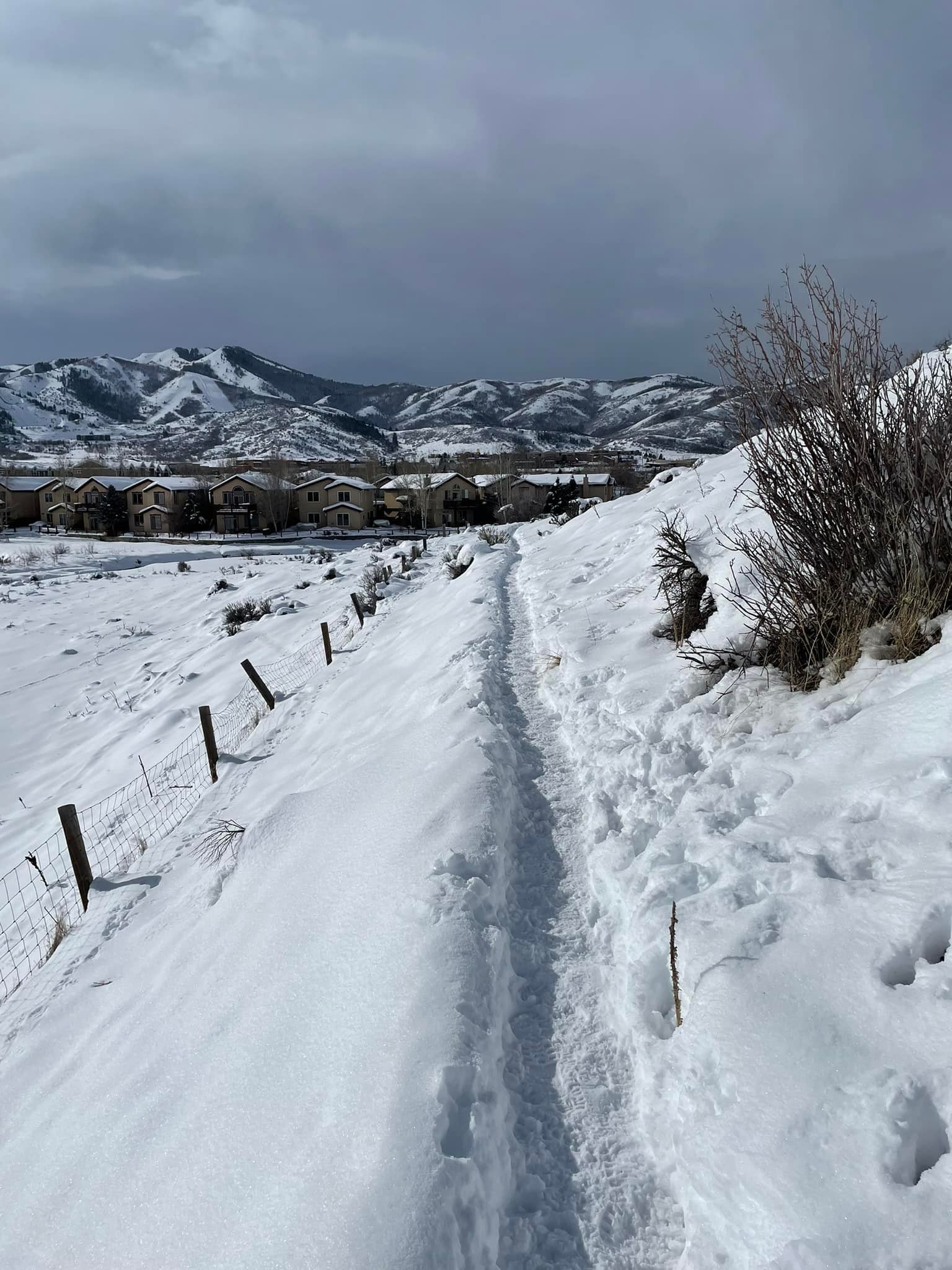Charting a New Path
Recently, I have been thinking a lot about charting new paths, and especially about the difficulty and the rewards of doing so.
The three pictures below were taken during some recent mountain hikes in Utah and demonstrate the point: charting an entirely new path takes many times more energy, much more perseverance, and an almost incredible amount more strength than any other way we might take. But it also takes people who follow and are willing to explore beyond.
Look at the first picture, taken 1-2 days after 1-2 feet (30-60 cm) of new snow. I was trying to open up a path with my hiking shoes. Every step I fell in, with snow to my knee or even to my hip. Every step was a fight - I was sweating profusely even with the cold air and my mountain gear. During one trip, I fought through the challenge and managed to achieve my goal and complete the hike. During a trip after the next snow, I had to turn around. Frankly, I just could not do it. It was too hard.
The second picture shows a path that was already opened up by someone. it is still hard to follow it, and at times the shoes go way in. But, following the footsteps of a pioneer who managed to open up the passage creates a certainly I did not have during the first hikes: someone already managed to do it. Why shouldn’t I?
The third picture shows a path after tens of people have passed. Although it still has its challenges - it is slippery, it is not flat - there is no question whether or not I will achieve my goal. I can do so because of others who got there ahead of me.
Based on this, I want to share three thoughts about charting new paths
First and foremost, it is absolutely critical that we continually find new paths. Even though it is sometimes uncomfortable and incredibly hard, it is also fun to find a new path and fight your way forward. And, whether it is in research, innovation or leadership, new paths open up a whole world of possibilities. Strategies to only follow paths of others may be more comfortable, but lead to loss of leadership, and also the loss of courage and “can do” attitude that comes from a mind trained in challenges.
Second, cheer on the leaders, be a first follower! In fact, celebrate the ones that open the pathways, the ones that take in the seemingly impossible, even if they fail from time to time. And do so by stepping into the path behind them. Sometimes, a little bit of support and encouragement goes a long way towards achieving success. And, it opens up the path for even others. First followers are incredibly important to take advantage of new ideas and new approaches. They in many ways help figure out the opportunities created with the new approach.
And third, as a new path, a new approach, or a new innovation is found, follow that path but remember to look right and left. Do not just blindly follow pathways others have opened - add to it, broaden, and engage the boundaries. Often, some of the most important aspects of a new pathway are in the periphery and only those who take the time to look around and think will find these most promising solutions.



